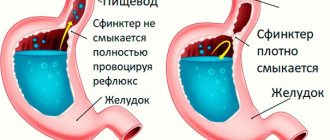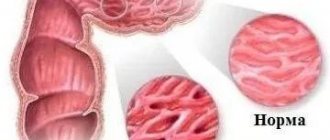Prolactinoma is a benign formation that develops in the anterior lobe of the pituitary gland and produces the hormone prolactin in high concentrations. According to statistics, this hormonally active tumor develops much more often in women of reproductive age. The size of microprolactinoma is usually about 2-3 mm. The diameter of macroprolactinoma exceeds 1 cm.
As a rule, macroprolactinomas are detected in male patients, microprolactinomas are detected in female patients.
Prolactinoma: causes, symptoms, treatment, consequences
Prolactinoma
is one of the most common neoplasms of the anterior pituitary gland, the size of which most often ranges from 1-3 mm (
pituitary microadenoma, microprolactinoma
), less often - more than 10 mm (
pituitary macroadenoma, macroprolactinoma
). This type of adenoma rarely degenerates into a malignant neoplasm. Being a hormonally active tumor of the pituitary gland, prolactinoma promotes increased production of prolactin and an increase in its level in the blood serum.
Prolactin is a natural hormone that promotes milk production in postpartum women. Along with luteinizing and follicle-stimulating hormones, prolactin also regulates sexual and reproductive functions in the body of men and women. Excessive levels of prolactin in the blood have a suppressive effect on the production of female sex hormones - estrogens, which leads to the development of hypogonadism, menstrual irregularities and infertility. Prolactinoma in men contributes to the development of gynecomastia, decreased libido and erection due to dysregulation of the production of the male sex hormone - testosterone and decreased sperm activity due to hyperprolactinemia.
A third of pituitary tumors are prolactinomas, and in women of fertile age this type of tumor occurs 8-10 times more often than in men.
Causes of hyperprolactinemia
There are a number of well-known causes of hyperprolactinemia:
By their nature, the causes of hyperprolactinemia are physiological and pathological.
Physiological are considered:
- Pregnancy and the postpartum period (for mothers who do not breastfeed, lasts about one to seven days)
- Lactation
- Nipple stimulation or irritation
- Having sex, being stressed, eating food.
Pathological causes of hyperprolactinemia:
- The most common is a pituitary adenoma - a small tumor lesion of the pituitary gland.
- Pathological changes in the pituitary stalk and hypothalamus (sarcoidosis, neurosyphilis, cysts, mechanical damage, etc.).
- Various surgical operations using general anesthesia.
- Liver diseases (cirrhosis).
- Renal failure (after a kidney transplant, prolactin levels become normal).
- Thyroid diseases.
- Ovarian diseases - polycystic ovary syndrome (PCOS).
- Taking certain medications.
Many gynecological diseases cause the development of hyperprolactinemia in women. There are many cases in medical practice when an increase in prolactin levels was observed in patients with endometriosis, adnexitis, uterine fibroids, and inflammatory processes. A third of women who have been diagnosed with polycystic ovary syndrome (PCOS) also have a history of functional hyperprolactinemia. This is due to the fact that high levels of estrogen in PCOS stimulate the production of prolactin and its synthesis.
Causes and classification of prolactinomas
The reasons for the development of prolactinomas remain poorly understood to date. In a certain group of patients, a hereditary nature of tumor development was noted. Another group of patients with prolactinoma has genetic disorders in the form of a hereditary disease called multiple endocrine neoplasia, which is characterized by excessive production of hormones by the parathyroid and pancreas glands, as well as the pituitary gland. Geneticists do not stop searching for the gene responsible for the occurrence of prolactinoma.
Prolactinomas are classified
Depending on the size and location of the tumor relative to the pituitary fossa in the sella turcica, there are two groups:
— intrasellar prolactinomas
— the diameter of which does not exceed 10 mm, are located inside the sella turcica;
— extrasellar prolactinomas
- exceeding 10 mm in diameter and extending beyond the boundaries of the sella turcica.
Depending on the size of the prolactinoma, the clinical signs of the disease and the subsequent choice of treatment method will differ.
Diagnosis and treatment of hyperprolactinemia in Moscow
Any form of hyperprolactinemia, regardless of the cause, requires medical supervision. Modern methods of therapy are based primarily on drug treatment and lifestyle correction. It is also important that normalizing prolactin secretion during hyperprolactinemia often requires the participation of several specialized specialists: they select a method that not only reduces the clinical manifestations of the disease, but in most cases leads to complete recovery. The success of therapy depends on both the causes of the disorder and the timeliness of the patient’s treatment.
At the Alfa Health Center clinic in Moscow you can get a personal consultation with a gynecologist-endocrinologist.
Our specialist will prepare personal recommendations on organizing your daily routine, level of physical activity, sleep patterns and nutrition. Registration is made by phone or through an automated form on the website. We work seven days a week. Share:
Symptoms of prolactinoma
Prolactinoma is characterized by a dysfunctional disorder of the reproductive system, neurological signs, psycho-emotional disorders and changes in the endocrine system.
Prolactinoma in women is often presented as a microadenoma and manifests itself as menstrual irregularities
in the form of oligomenorrhea, opsomenorrhea or complete absence of menstrual flow. In addition, in the presence of menstruation, patients do not ovulate, and the luteal phase is shortened. The first menstruation usually comes late, and the subsequent cycle is irregular.
Most patients usually turn to a gynecologist due to a number of unsuccessful attempts to become pregnant.
.
A gynecological examination can reveal hypoplastic changes in the uterus
.
In one out of five women, the main complaint is the spontaneous release of fluid resembling milk from the mammary glands, not associated with childbirth - galactorrhea
. Moreover, the severity of galactorrhea can vary from single drops when pressing on the mammary gland to heavy discharge. However, this symptom may not appear even with a significant concentration of prolactin in the blood.
Due to disruption of the production of estrogen and progesterone, mastopathy
and reduction of mammary glands.
In addition, an increase in the level of prolactin in the blood leads to the leaching of calcium salts from bone tissue and the development of osteoporosis
, leading to frequent fractures due to brittle bones.
A decrease in the amount of estrogen contributes to the accumulation of fluid in the body and weight gain
.
In men, prolactinoma
manifests itself in the form of infertility, decreased libido and potency, testicular atrophy, the development of gynecomastia (enlarged mammary glands) and, in rare cases, galactorrhea.
If the tumor compresses the surrounding brain tissue, in particular the diaphragm of the sella turcica, patients complain of constant headaches
.
When the tumor grows beyond the sella turcica and compresses the optic nerves, there is a narrowing of the visual fields, double vision, drooping eyelids, and when the optic chiasm is compressed, complete blindness occurs. Psychoemotional disorders
that arise during the development of prolactinoma manifest themselves in the form of depression, irritability, emotional instability, narrowing of interests, apathy, increased anxiety, memory and attention impairment, and sometimes in the form of social maladjustment and autism.
Sometimes a clear clinical sign of prolactinoma is an acute hemorrhagic infarction of the pituitary gland, which is characterized by a sudden acute headache accompanied by nausea and vomiting, in some cases, loss of consciousness and a number of meningeal symptoms.
Prolactin is one of the hormones of the anterior pituitary gland. According to its chemical structure, it is a peptide hormone consisting of 199 ^ amino acid residues. Prolactin is secreted in lactotropic cells of the anterior pituitary gland, which constitute from 11 to 29% of the total cellular composition of the adenohypophysis. There is also extrapituitary secretion of prolactin, the significance of which, however, has not been definitively established [1].
Like human growth hormone, pituitary secretion of prolactin is under direct hypothalamic control and is not regulated by feedback. The hypothalamic-pituitary system has both an inhibitory and stimulating effect on prolactin secretion through neuroendocrine, autocrine and paracrine mechanisms [2]. The secretion of prolactin is constantly inhibited by the hypothalamic hormone dopamine. Dopamine is produced in neurons of the paraventricular and gray tuberous nuclei, as well as in neurons of the infundibulum nucleus and arcuate nucleus of the hypothalamus.
The inhibitory effect of dopamine is realized through stimulation of dopamine receptors localized on lactotropic cells. There are 2 types of dopamine receptors: Dj and D2. D1 receptors stimulate adenylate cyclase, and D2 receptors inhibit it. Dopamine and its agonists stimulate D2 receptors, which leads to inhibition of adenylate cyclase, a decrease in the amount of intracellular cAMP and a decrease in prolactin secretion. It is on this stimulation of D2 receptors that the effect of the therapeutic action of dopamine agonists (L-dopa, apomorphine, dopamine, bromocreptine, cabergoline) in the treatment of hyperprolactinemia is based. Estrogens, dopamine antagonists (phenothiazines, metoclopramide), serotonergic agonists (5-hydroxytryptophan), adrenergic inhibitors, sympatholytics (reserpine, α-methyldopa), opiates, acetylcholine, oxytocin, serotonin, have a prolactin-stimulating effect. melanostimulating hormone, TSHR (thyrotropin-releasing hormone), neurotensin, and hypoglycemia [3].
Prolactin, like other hormones, has a circadian rhythm of secretion. The maximum concentration of prolactin in human blood plasma is observed during sleep, the minimum level is in the morning, during awakening [4].
There are a number of physiological conditions accompanied by an increase in prolactin levels. Such conditions include, first of all, pregnancy and breastfeeding. In men, a physiological rise in prolactin levels can be observed during sleep, during intake of protein foods, physical activity, and in response to stress.
Pathological hyperprolactinemia is an increase in prolactin levels against the background of a particular disease or taking medications. Pathological hyperprolactinemia develops as a result of anatomical or functional disorders of the hypothalamic-pituitary system. In accordance with its origin, pathological hyperprolactinemia can be conditionally divided into hyperprolactinemia of tumor origin (prolactinoma) and non-tumor origin. In some cases, when it is not possible to establish the cause of pathological hyperprolactinemia, they talk about the idiopathic form of hyperprolactinemia, in which the function of pituitary cells increases, but their number does not change [2].
The level of prolactin can suggest the nature of hyperprolactinemia. An increase in prolactin levels by 1.5-3 times usually indicates non-tumor hyperprolactinemia. Hyperprolactinemia with an increase in prolactin levels from 2000 to 4500 mIU/l is observed, as a rule, with pituitary microadenomas; an increase in prolactin over 4500 mIU/l is typical for pituitary macroadenomas [5].
Prolactin has an effect on almost all organs and systems, so the clinical picture of hyperprolactinemia is extremely polymorphic.
| Figure 1. Regulation of prolactin secretion |
Table 1. Etiological factors of hyperprolactinemia
| Pathological hyperprolactinemia | Primary diseases of the hypothalamus and pituitary gland
Microadenoma (diameter up to 10 mm) Macroadenoma (diameter more than 10 mm) Rupture or transection of the pituitary stalk Empty sella syndrome Neurogenic stimulation Chest trauma or surgery Herpes zoster Excess TSHR (thyrotropin-releasing hormone) Primary hypothyroidism Idiopathic hyperprolactinemia Metabolic causes
Chronic renal failure and systemic hemodialysis Ectopic secretion of prolactin Neoplasms |
| Drug-induced hyperprolactinemia | Antihypertensive drugs (reserpine, methyldopa, verapamil) Dopamine receptor blockers
Estrogens Drugs (morphine, heroin, cocaine) Antiulcer drugs (cimetidine) |
| Kalinchenko S.Yu. A step forward in the treatment of hyperprolactinemia. Selected lectures. M., 2010.[2] | |
One of the main manifestations of hyperprolactinemia is impaired sexual and reproductive function, caused by a decrease in the secretion of gonadotropins against the background of hyperprolactinemia. In men, these disorders are expressed in decreased sexual desire and erectile dysfunction (ED) (50-85%), infertility due to oligozoospermia and ejaculation disorders (3-15%), gynecomastia (6-23%). With sexual dysfunction in men, hyperprolactinemia is detected in 0.4-11% of cases, and in some studies reaches 20%, therefore, studying the level of prolactin in the blood is an important step in diagnosing the causes of sexual dysfunction in men and ED in particular, as the most frequent manifestations of sexual dysfunction. In most cases, ED is only a symptom of the disease, so treatment should be comprehensive and aimed at eliminating the underlying problem. In the case of hyperprolactinemia, even a slight increase in prolactin levels can lead to erectile dysfunction. Therefore, in many cases, ED may be a marker of hyperprolactinemia [7]. At the same time, the diagnosis of hyperprolactinemia in men is complicated by the fact that characteristic complaints (decreased libido, ED and infertility) are not always associated with the presence of serious endocrinopathy. According to Buvat J., Lemaire A. (1997), hyperprolactinemia was detected in 3.18% of men with ED [8]. A high incidence of hyperprolactinemia (19.3%) among men with sexual disorders was reported by N. Grafeille (1997).
| Figure 2. Erectile function scores according to the IIEF scale in the main group of patients with ED (n = 1148) and the group of patients with hyperprolactinemia (n = 69) |
Other clinical manifestations of hyperprolactinemia are psychoemotional disorders, such as irritability, anxiety, depression, memory and mood deterioration, and sleep disturbances.
Neurological symptoms occur in patients with tumors of the hypothalamic-pituitary region and are caused directly by tumor growth. These symptoms include: headache, dizziness, visual disturbances (limited visual fields, double vision, decreased visual acuity).
Patients with prolactinemia may experience certain symptoms of endocrine disorders caused by loss of other pituitary functions (symptoms of pituitary insufficiency), such as symptoms of hypothyroidism (with decreased TSH secretion), symptoms of adrenal insufficiency (with decreased ACTH secretion), symptoms diabetes insipidus (with a decrease in the secretion of antidiuretic hormone), symptoms of hypogonadism (associated with a decrease in the secretion of LH, FSH). Some endocrine symptoms are caused directly by an increase in prolactin levels. These include galactorrhea, obesity, and insulin resistance.
TREATMENT OF HYPERPROLACTINEMIA
For all forms of hyperprolactinemia, incl. and tumor genesis, the main method of treatment is medication. Drug treatment is carried out using dopamine agonists, among which cabergoline (a third generation dopamine agonist) is currently the drug of choice. First generation dopamine agonists include lysergic acid derivatives (bromocriptine, methysergide), aminoergoline derivatives (lisuride, tergulide, mesulergine), clavine derivatives (pergolide, metergoline). Bromocriptine is the most common first generation dopamine analogue, which for a long time remained the “gold standard” in the treatment of hyperprolactinemia, effective in reducing prolactin levels and restoring reproductive and sexual function. In most patients, treatment with bromocriptine leads to a number of side effects, such as drowsiness, dizziness, headache, orthostatic decrease in blood pressure, nausea, vomiting, which is the reason for refusal of treatment in 12% of patients.
The imperfection of dopamine analogues of the first generation became the basis for the creation of new dopamine agonists of the second generation (quinagolide) and third generation (cabergoline), which today are the drugs of choice in the treatment of any form of hyperprolactinemia, more selective for D receptors and characterized by greater efficiency and better portability.
When treating erectile dysfunction in patients with hyperprolactinemia, normalization of prolactin levels comes to the fore. For this purpose, dopamine agonists are used, which are used in the first stage of treatment as monotherapy. In most cases, monotherapy with dopamine agonists restores erectile function. If monotherapy with dopamine agonists is ineffective, which is most often due to hypogonadism concomitant with hyperprolactinemia, therapy aimed at normalizing testosterone levels, as well as therapy with phosphodiesterase type 5 inhibitors (PDE-5), is prescribed. So according to Carani S. et al. (1996), treatment with bromocriptine restored erectile function before the level of testosterone in the blood increased (a decrease in libido may be a consequence of both dishormonal disorders and, possibly, the direct effect of prolactin on the brain) [9].
MATERIALS AND METHODS OF RESEARCH
We examined a large sample of patients with ED of various etiologies (n=1148). Hyperprolactinemia was detected among patients of the general group in 69 (9%) observations. In a retrospective study of 69 adult men with hyperprolactinemia, the dominant clinical symptoms were predominantly endocrine in nature. Decreased or absent libido was detected in 58 (84%), gynecomastia - 12 (17.4%), galactorrhea - 2 (2.9%), rare beard growth was noted in 4 (5.8%) patients. Focal cerebral symptoms were present in 23 (33.3%), headache in 15 (21.7%), limited visual fields in 4 (5.8%), diplopia in 2 (2.9%) patients. Testicular volume was normal (> or = 15 cm3) in all patients except five who had signs of late pubertal development. A decrease in visual acuity was noted in 32 (46.4%) patients. Increased fatigue among patients with hyperprolactinemia was detected in 29 (42%) patients, sleep disturbances in 31 (44.9%). Serum prolactin levels ranged from 360 to 8000 mU/L (mean 1200 mU/L, normal range
Data from sexological testing (IIEF scale) demonstrated the prevalence of more severe ED symptoms among patients with hyperprolactinemia compared to all patients in the general group (Figure 2).
When examined, 20 (28.9%) patients with hyperprolactinemia had low testosterone levels (
RESULTS AND ITS DISCUSSION
In our study, hyperprolactinemia was detected in 9% of cases, clinically manifested by a wide range of neurovegetative disorders against the background of pronounced manifestations of ED. These pathological symptoms were successfully relieved by a 1-2 month course of pathogenetic therapy with drugs that reduce the level of prolactin in the blood plasma.
Thus, testing the concentration of prolactin in the blood is an important step in diagnosing the causes of ED and should be performed in all patients with complaints of decreased erection quality.
Key words: erectile dysfunction, hyperprolactinemia, treatment, dopamine agonists, bromocriptine, quinagolide, cabergoline.
Keywords: erectile dysfunction, hyperprolactinemia, treatment, dopamine agonists, Bromocriptine, quinagolide, cabergoline.
LITERATURE
- Dedov I.I., Melnichenko G.A., Romantsova T.I. Hyperprolactinemia syndrome. M. 2004.
- Kalinchenko S.Yu. A step forward in the treatment of hyperprolactinemia. Selected lectures. M. 2010.
- Dzeranova L.K. Hyperprolactinemia syndrome in women and men: clinical picture, diagnosis, treatment: Dis. ... Dr. med. Sci. M. 2007.
- Dedov I.I., Dedov V.I. Biorhythms of hormones. M. 1992.
- Casanueva FF, Molitch ME, Schlechte JA, Abs R., Bonert V., Bronstein MD, Brue T., Cappabianca P., Colao A., Fahlbusch R., Fideleff H., Hadani M., Kelly P., Kleinberg D ., Laws E., Marek J., Scanlon M., Sobrinho LG, Wass JA, Giustina A. Guidelines of the Pituitary Society for the diagnosis and management of prolactinomas // Clin Endocrinol (Oxf). 2006. Vol. 65. No. 2. P. 265-73.
- Bhasin S., Enzlin P., Coviello A., Basson R. Sexual dysfunction in men and women with endocrine disorders // Lancet. 2007. Vol. 369. No. 9561. P. 597611.
- Johri AM, Heaton JP, Morales A. Severe erectile dysfunction is a marker for hyperprolactinemia // Int J Impot Res. 2001. Vol. 13. No. 3. P. 176-82.
- Buvat J., Lemaire A. Endocrine screening in 1,022 men with erectile dysfunction: clinical significance and cost-effective strategy / J Urol. 1997. Vol. 158. No. 5. P. 1764-1767.
- Carani C., Granata AR, Fustini MF, Marrama P. Prolactin and testosterone: their role in male sexual function // Int J Androl. 1996. Vol. 19. No. 1. P. 48-54.
| Attached file | Size |
| 730.96 kb |
‹ Endovideosurgery in pediatric urology, reconstructive plastic surgery in children Up Stages and prospects for the development of oncological urology in the Research Institute of Urology ›
Diagnosis of prolactinoma
The most informative research method for identifying prolactinomas is magnetic resonance imaging of the pituitary gland
with a contrast agent, which allows you to determine the outlines of microadenomas, their location inside or outside the sella turcica.
When diagnosing macroadenomas, it is recommended to use computed tomography
of the sella region, in which the bone structures are clearly visible.
Laboratory research methods consist primarily of determining the level of prolactin in the blood, and the study is recommended to be carried out three times to exclude random fluctuations in the level of the hormone due to stress or other predisposing factors. Prolactinoma is characterized by a prolactin level in the blood exceeding 200 ng/ml.
Previously, to diagnose prolactinoma, stimulation tests with thyrotropin-releasing hormone were used, after the introduction of which into the body, in the first 20-30 minutes, the production of prolactin normally increased, doubling the initial level, and in patients with prolactinoma, the level of prolactin after stimulation did not change. Currently, this diagnostic method is not used due to its low reliability.
Norm prolactin in women
| Cycle phase | Normal prolactin concentration |
| Follicular (approximately 1-13 days) | From 4.1 to 30 ng/ml |
| Ovulatory (approximately day 14) | From 6.5 to 50 ng/ml |
| Luteal (approximately 15-28 days) | From 5 to 41 ng/ml |
The prolactin norm for expectant mothers and nursing women is much higher. The level of the hormone begins to increase in the first trimester and reaches its peak in the third. During this period, the normal concentration is up to 318 ng/ml. Moreover, even if the prolactin level goes beyond this limit, this does not indicate the presence of pathology. Pregnant women generally do not need to worry about these indicators.
Treatment of prolactinoma
The main goals when drawing up a treatment plan for prolactinoma are to reduce the concentration of prolactin in the blood, influence the tumor by reducing it and preventing further growth, as well as corrective measures to combat infertility, hypogonadism, disorders of the visual organs and the skeletal system.
If a pituitary tumor is detected for the first time, there are signs of rapid growth, surgery is contemplated, or the disease is detected during pregnancy, patients should be hospitalized.
Conservative treatment of prolactinoma involves the use of dopamine agonists - cabergoline, bromocriptine, abergin, which affect the level of prolactin in the blood, allowing to restore menstrual function and influence the size of the tumor.
In cases where the use of medications does not bring the expected effect and the clinical signs of the disease progress, surgical treatment is resorted to, which involves removing the tumor transsphenoidally (through the nasal sinuses). If patients have contraindications to surgery due to the presence of severe concomitant pathology, or patients refuse surgery, radiation is used to treat prolactinoma.
After surgical or radiation exposure, patients take medication for a long time, sometimes even throughout their lives. Control images of magnetic resonance imaging are recommended to be carried out once a year, and prolactin levels in the blood are examined twice a year.
Treatment of the condition
Before treatment, it is important to find out whether the change in the amount of the hormone is physiological or pathological. To do this, the doctor will prescribe monitoring of indicators. In addition, anamnesis helps to establish the true cause of the changes. If a hormonal surge was preceded by intense physical activity, active sports, or psycho-emotional shock, then we can talk about a temporary imbalance that the body compensates on its own.
If we are talking about pathological processes, then an endocrinologist knows how to lower prolactin in men. At the clinic Dr. AkNer you will be able to undergo a comprehensive examination and treatment. If necessary, an andrologist and a reproductologist will be involved in therapy.
If the problem is caused by pathologies of internal organs (kidneys, liver, thyroid gland), consultations with relevant specialists will be required. If an adenoma or tumor of the pituitary gland is detected, the help of an oncologist is necessary.
In most cases, compensation for elevated prolactin in men is performed with medication. For correction, antiprolactin therapy is individually developed in each case. It requires constant monitoring of hormone levels under the supervision of a specialist.
Prolactinoma and pregnancy
If, while taking drugs that reduce prolactin levels in the blood, reproductive function is restored and pregnancy occurs, dopamine agonists should be discontinued. In the first trimester of pregnancy, when the risk of spontaneous abortion in patients with prolactinoma is very high, natural progesterone is prescribed. Monitoring of a pregnant woman with prolactinoma by an ophthalmologist and neurologist throughout pregnancy is mandatory. Dopamine agonists are prescribed only when progressive tumor growth is noted. It is not advisable to perform magnetic resonance imaging during pregnancy, however, if there is no positive dynamics from the use of conservative treatment, it is necessary to decide on neurosurgical intervention.
A control magnetic resonance examination is recommended a couple of months after birth. There are no contraindications for breastfeeding, but in cases of tumor enlargement, suppression of milk production may be necessary.






